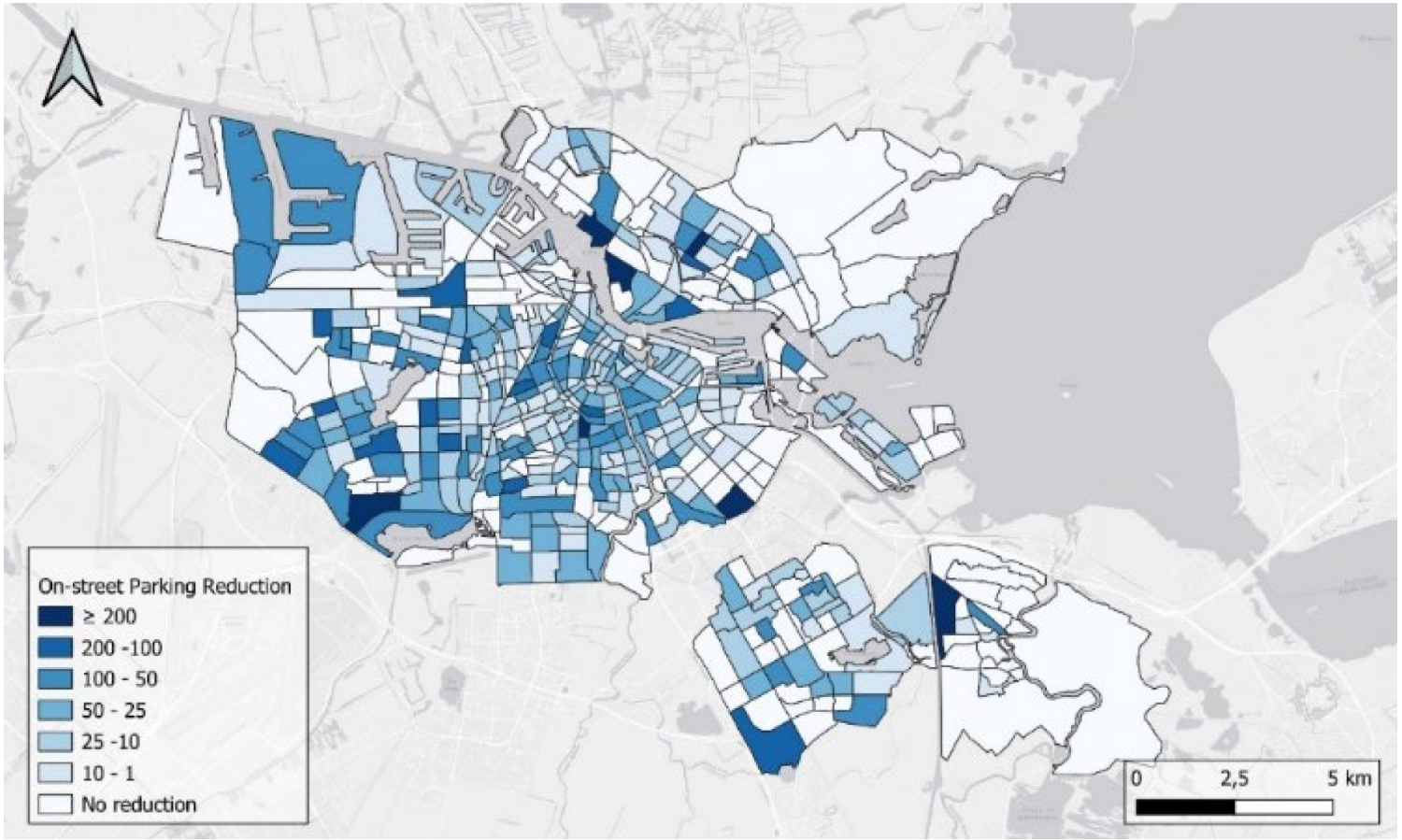Reducing on-street parking
Student information
Author: Merijn van Elk
Institution: Vrije Universiteit Amsterdam
Graduation year: 2025
The impact of reducing on-street parking on house prices: Evidence from Amsterdam
In 2019 Amsterdam adopted a plan to largely free Amsterdam from cars: Agenda Amsterdam Autoluw (Agenda Amsterdam Car-free). The ambition being to improve liveability and accessibility by reassigning on-street parking spaces to more beneficial uses.
Between 2017 and 2024, some 9,665 on-street parking spaces in various Amsterdam neighbourhoods have been reassigned to purposes more beneficial to the city: primarily redevelopment and housing projects, bicycle parking and greenery.
The aim of this research was to find out how this policy is affecting house prices in Amsterdam.
Empirical research
A high-resolution GIS analysis revealed that 9,665 on-street parking places had been reassigned by the municipality between 2017 and 2024.
Data was gathered from Amsterdam regarding:
residential property: transaction prices and official property values (WOZ-waarde[i]);
on-street parking: locations of current on-street parking places and reassignments per neighbourhood per year.
The GIS analysis also revealed substantial variation in on-street parking space reductions across neighbourhoods, which could be visualised.

On-street parking space reduction in Amsterdam between 2017 and 2024
The parking density was calculated for each property or transaction and buffer zones defined for the availability of on-street parking within 200-500 m from the property.
Parking density = #on-street parking spaces / #households within the buffer zone
Two empirical models were then developed:
Based on actual sales prices, derived from property transactions. These show changes over time and between neighbourhoods. Detail limited by the number of transactions, so not much detail
Based on official property values (WOZ-waarde) in 2017 and 2025. Lots of data available so greater detail, but only compares neighbourhoods at one point in time.
Additional findings from the sensitivity analysis show that:
Buffer distance matters: Parking reduction effects are strongest at 400-500 metres; more on-street parking spaces closer to the property may be seen as disruptive.
Private parking assumption flawed: Not all pre-1970 buildings lack private parking.
Parking type matters: Excluding special-use spaces (e.g. for blue badge holders or EV charging) reduced the magnitude of the effect; these parking spaces therefore have considerable impact.
Negative interaction: Owners of private parking benefit less (or are harmed) by increasing on-street parking availability.
Conclusions
The availability of on-street parking has a significant impact on the value and prices of residential property.

Willingness to pay for on-street parking availability
Amsterdam residents place a positive value on on-street parking with a willingness to pay (WTP) €2,389 and €3,102 for the availability of on-street parking within the 200-500 m buffer zone near their property.
[i] property value assigned by the municipality for tax purposes
